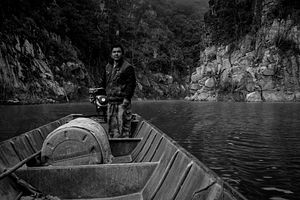Luc Forsyth and Gareth Bright have set out on a journey to follow the Mekong river from sea to source. The Diplomat will be sharing some of the stories they’ve found along the way. For more about the project, check out the whole series here.
After so much time on the Mekong, the fact that we hadn’t encountered any fishermen on the Lancang seemed unnatural. But in this river-straddling community, we learned that the rise of hydroelectric dams has given rise to a small fleet of fishermen in an unexpected way.
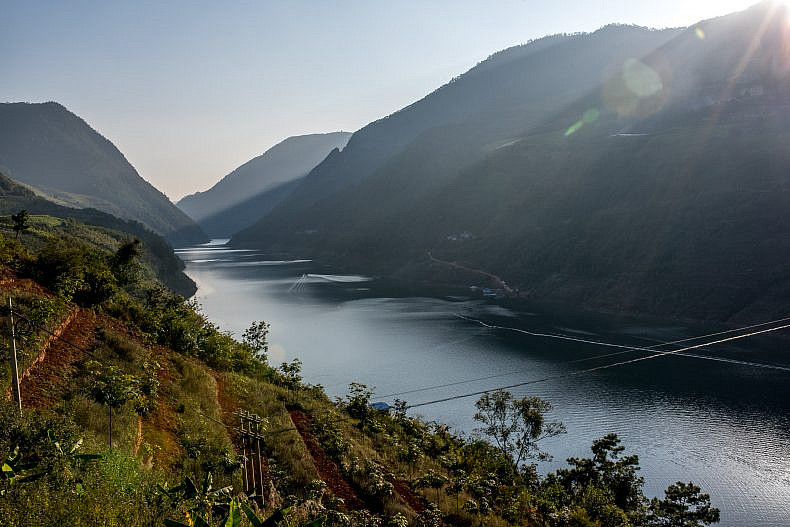
A view of one of the Lancang (Mekong) tributaries in Jinglin, Yunnan Province, China. Photo by Luc Forsyth.
The first thing that grabbed our attention as we stepped off the bus in the tiny roadside community of Jinglin River Bridge was the richness of the Lancang’s surreal blue color. Though we had noted the changing characteristics of the river since entering China, the narrow and swift flowing aquamarine channel at the bottom of a deep mountain valley was so utterly different to the lazy brown Mekong that we had known for the last year as to be nearly unrecognizable.
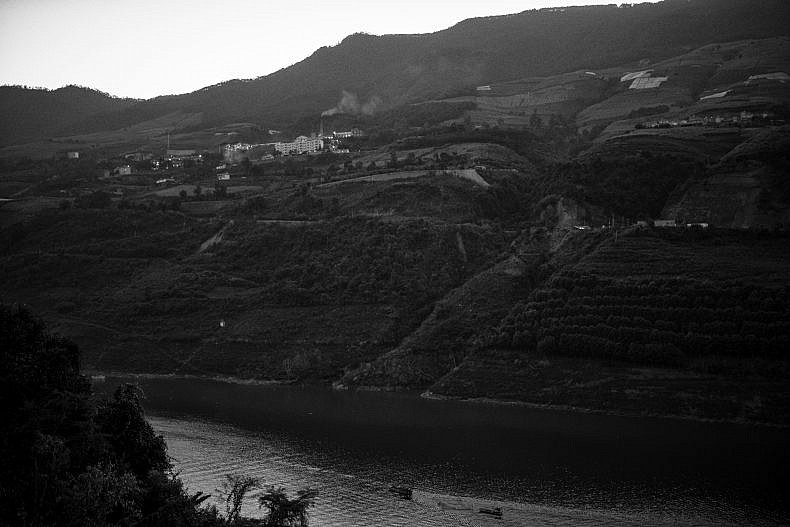
Another view of one of the Lancang (Mekong) tributaries in Jinglin. Photo by Gareth Bright.
Later we would learn that the unnatural color of the river was largely due to the loss of sediment because of China’s hydropower dams along the Lancang. But in our initial ignorance we did little but stand and stare down at the alien waterway, speechless as we took in the vast landscape.
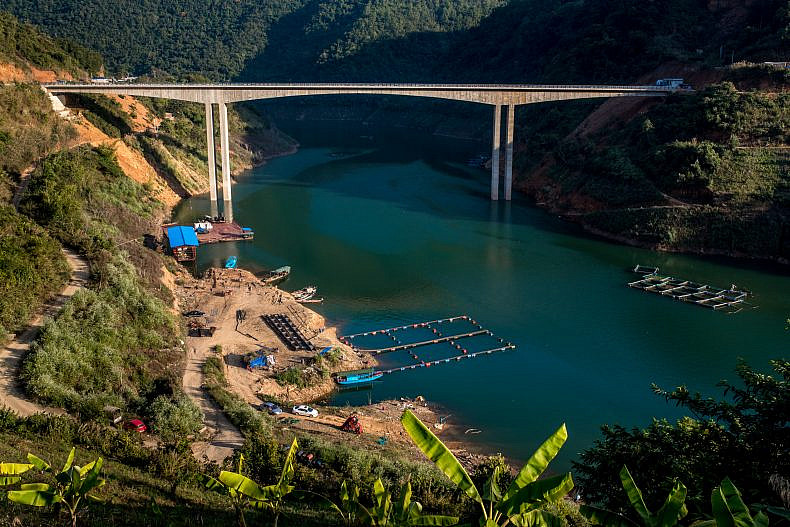
The bright color of the water differs from the slow, wide, brown Mekong farther downstream. Photo by Luc Forsyth.
The naming of Jinglin River Bridge was both literal and appropriate. Derived from the blending of Jinggu, the name of the county the town was located in, and Lancang, the community was visually defined by, and the impressively stark concrete bridges that spanned the river in several places. Though utilitarian and without ornament, the bridges were a reminder of the scope and scale of China’s infrastructural engineering projects. In Laos or Cambodia, with their aging and potholed highways, such roadworks would have been among the best in the country; but in China, even in an out of the way backwater, they were unremarkable.
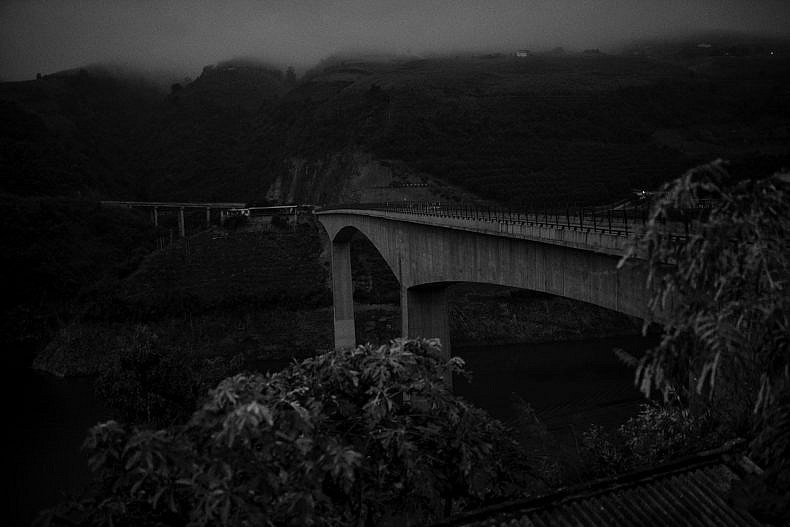
The bridges over the Lancang (Mekong) tributaries in Jinglin are nothing fancy. Photo by Gareth Bright.
We had stopped in Jinglin for two reasons. The first was geographical: this was the only major crossing point over the Lancang between the larger cities of Pu’er and Lincang, and the only route to access Yunnan’s mountainous north without suffering a lengthy detour to the east. The second reason was less practical and more hypothetical. Since arriving in China, we had yet to meet anyone intimately or directly engaging with the Lancang on a daily basis.
We had encountered tourists and retirees who enjoyed the river as a source of relaxation, farmers who irrigated their crops with its waters, and sand dredgers who plied its currents on immense metal hulks to bring its sandy bed to the surface, but none of the fishermen that had been so prevalent in the lower Mekong basin. If we were going to find such people in Yunnan, we reasoned, what better place to start looking than in a small village that had incorporated the river into its name?
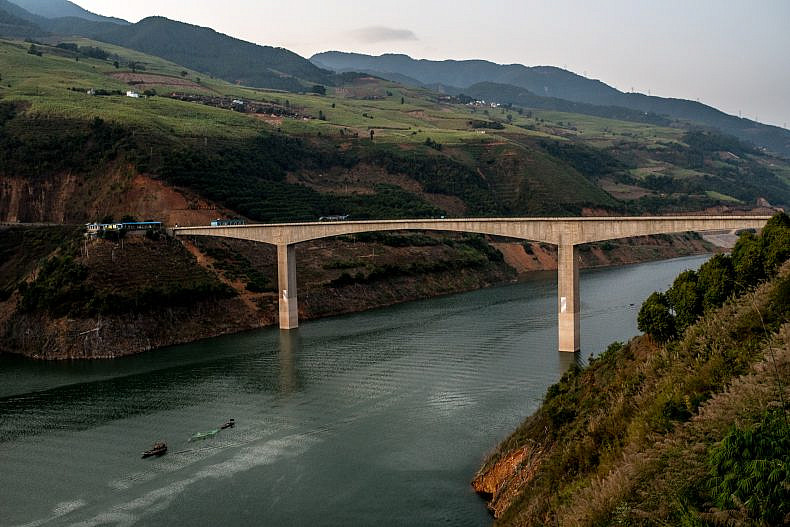
Until Jinglin, there hadn’t been any fishermen on the river in China. Photo by Luc Forsyth.
A Revolutionary Welcome
“This revolutionary area welcomes you!” the Mandarin characters carved into the side of a large stone monument proclaimed in a historic reminder of the town’s political past.
Once the site of an important salt refinery, the area had been ground zero for the rising wave of discontentment among China’s lower classes over the inequality of wealth between themselves and their Kuomintang rulers. When the prices of salt rose to unaffordable levels, the rural poor formed themselves into small Communist militant groups, which would later coalesce under Mao and take part in the civil war that changed China’s political system forever.
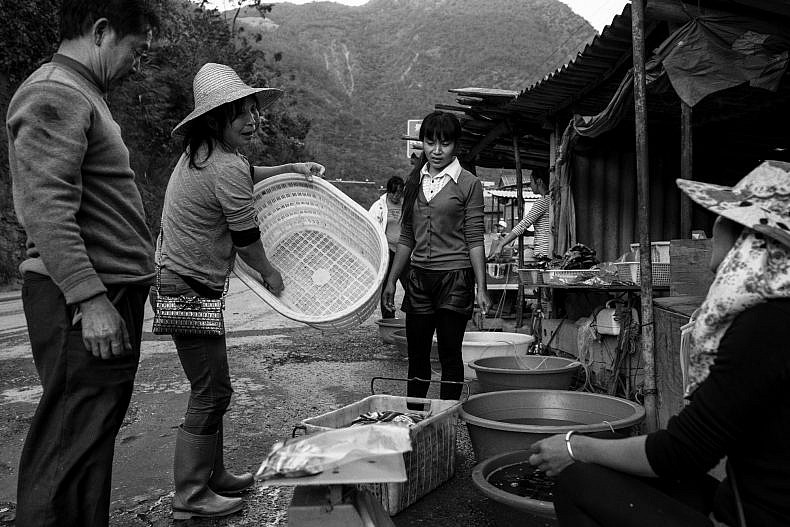
Customers stop at a road side fish market in Jinglin. Photo by Gareth Bright.
Now, however, there were no signs of insurrection or rebellion, and the memories of those turbulent times were evidenced only in stone. It was the smell of fish, not class warfare, that permeated the morning air as we searched for a path down the steep mountain valley to the Lancang below.
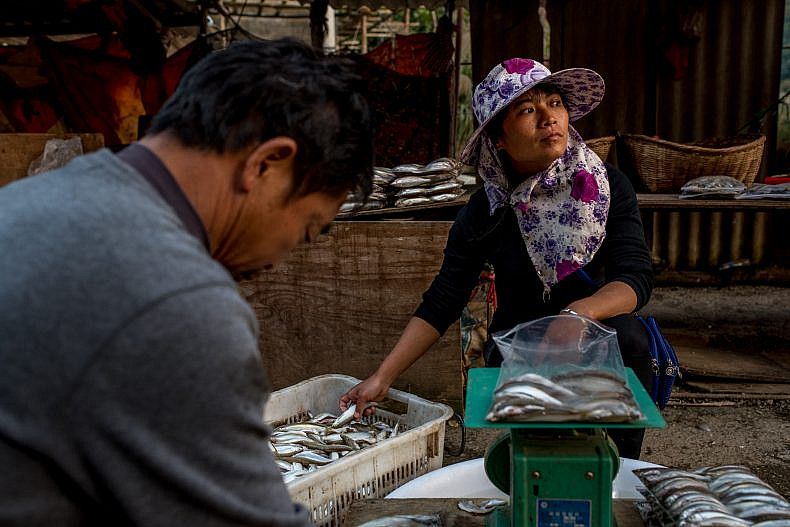
Fish vendors sort their catch at a local market in Jinglin, Yunnan province, China. Photo by Luc Forsyth.
A small market was spread out along the highway, offering travelers an opportunity to pick up fresh seafood before reaching their ultimate destinations. The gathering of their parked cars gave a false impression of bustle to the town that was only transitory. The fish were live, splashing feebly in a few centimeters of water at the bottom of plastic buckets, and so we knew that fishermen could not be too far away.
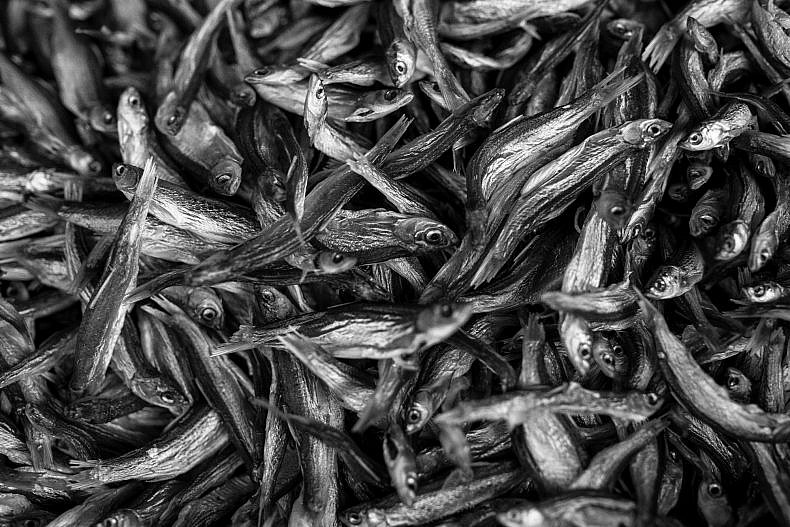
Fish hang to dry at a local market near the river in Jinglin. Photo by Gareth Bright.
When we eventually found our way down to the river’s edge, however, the fishing boats that lined the banks were devoid of crew or cargo. Instead we found a family of local tourists who had stopped to enjoy a picnic and some recreational fishing on the Lancang.
“I don’t really catch anything,” the father of the family said when we asked about his fishing rod. “It’s just for fun. If you want to see real fishermen, you could try coming back in the morning.” His teenage son, seemingly embarrassed by his father’s repeated attempts to offer us cigarettes and food, hurried away down the beach so as to not be drawn into the conversation. Having both survived the terrible awkwardness of being teenage boys, we empathized with his unease and left the family to their lunch.
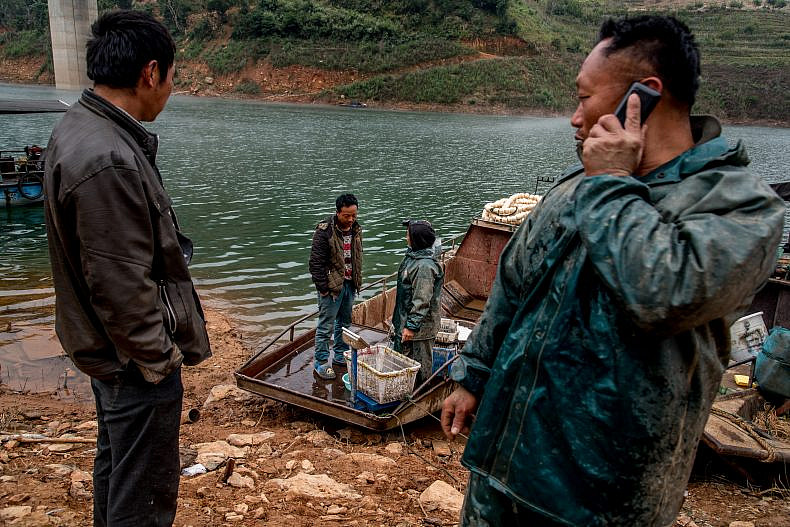
Fishermen prepare to offload their morning’s catch. Photo by Luc Forsyth.
“The fishermen leave early in the morning,” 52-year-old Zhang Yun said in front of his hotel. We had left the river banks and returned to the town to see if someone could introduce us to an active commercial fisherman, and had gotten lucky when we met Zhang.
“They only started fishing here three years ago,” he continued. “Before the dam [near Simaogangzhen] was built the river moved too fast. Twenty years ago if you jumped in here the currents would carry you away. It has changed a lot.” With that he pulled a cell phone from his pocket and made a call to a friend.
“Go to the river early tomorrow morning and he will meet you there,” Zhang said. “He can take you fishing.”
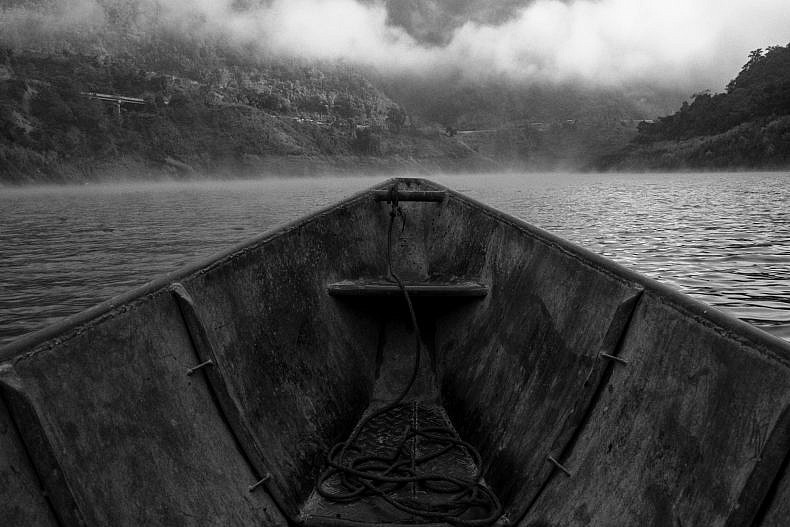
Morning mist on the Lancang. Photo by Gareth Bright.
Unnatural Stillness
Though the sky was still dark and the rising sun obscured by the high valley walls, the banks of the Lancang were a hive of activity compared to the previous afternoon. Boats were already returning from the day’s fishing and the small crews worked together to weigh and sort their catch.
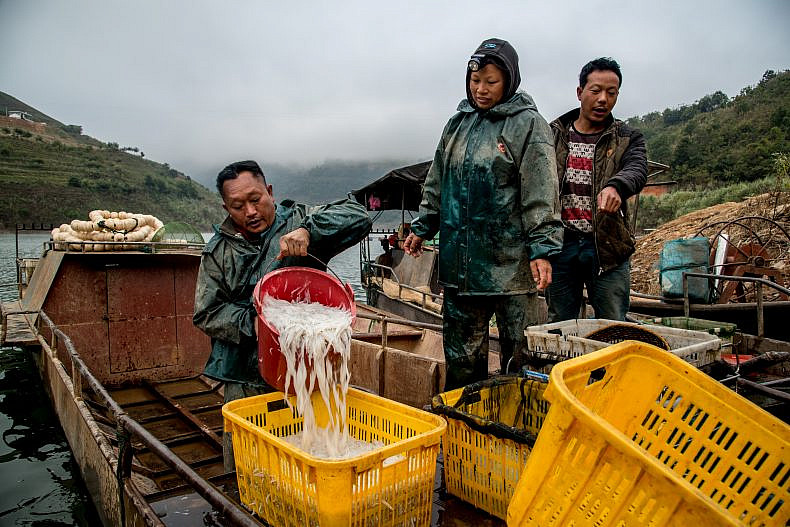
Fishermen sort their morning’s catch on a tributary of the Lancang in Yunnan, China. Photo by Luc Forsyth.
“This has only been possible since the dam,” a husband-and-wife fishing team told us as they hefted baskets of tiny shrimp and whitefish onto a set of digital scales, confirming what Zhang had said the previous day. “Before [the dam] you couldn’t catch anything. We worked as sugar cane farmers, but this is better money. We work for two or three hours and can get 30 kg of shrimp a day and sell them for 24 yuan per kilo.”
If what they said was accurate, a morning’s fishing could earn the couple more than $100 — vastly more than the small scale river fishermen we had encountered earlier in our journey who often survived on just a few dollars a day.

People bring in the morning catch in Jinglin. Photo by Gareth Bright.
When Su Youdong, the fisherman Zhang Yun had called for us the day before, arrived at the river’s edge, the sun had not yet risen high enough to lessen the bite of the morning chill. As we boarded his boat to set out on the Lancang, the cold metal benches stung our legs through the fabric of our pants. An ethereal mist blanketed the water, and the mountains rose on both sides of the river valley to create a sense of place that felt prehistoric. Only the sound of the boat engine and the presence of the concrete bridges far overhead reminded us of the modern world.
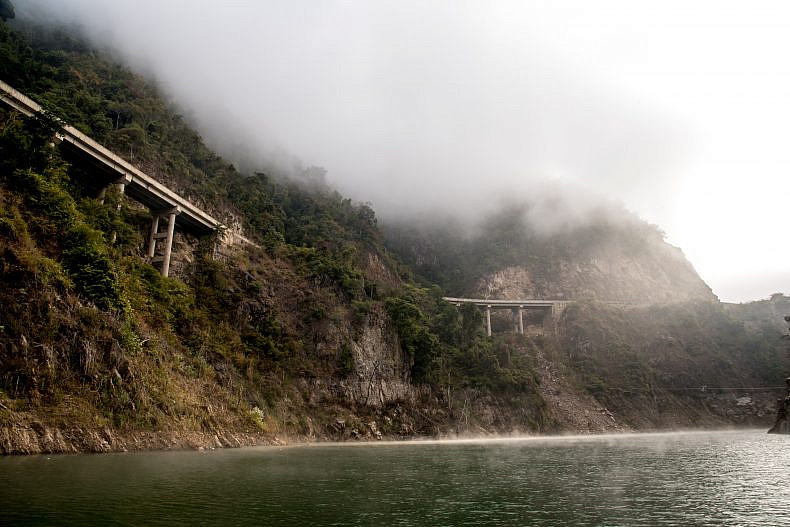
Morning mist on a tributary of the Lancang (Mekong) river. Photo by Luc Forsyth.
“I’ve been fishing since the dam was built,” Su said as he worked the outboard motor to maneuver around unseen nets submerged just under the river’s surface. “I’ve got ten nets in the river, and I still catch plenty of fish. But the rare and expensive species are gone — now I catch mainly common species, like tilapia and carp. There are more and more people fishing here, so we catch less.”
As Su’s boat navigated the Lancang, there seemed to be fishing vessels around every bend. But if there was any animosity between fishermen over the dwindling species diversity, they did not express it. Instead they called out to each other cheerfully and chatted in passing about the quality and quantity of their catches.
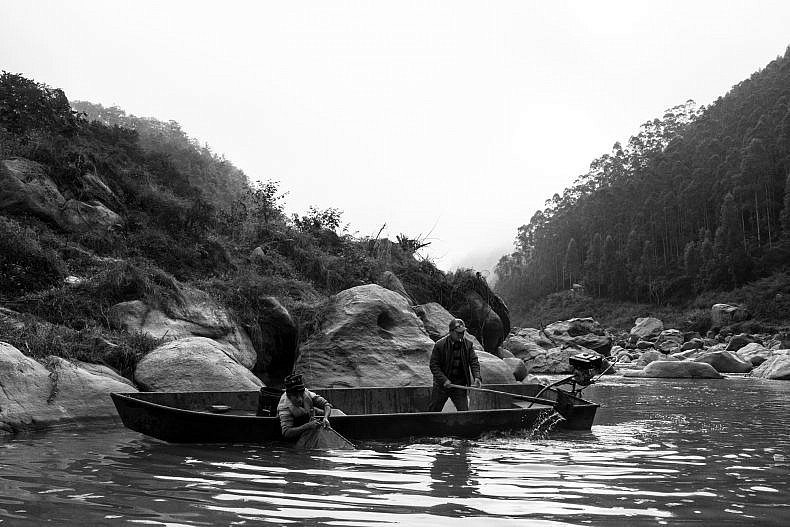
Fishermen on a tributary of the Lancang (Mekong) in Yunnan, China. Photo by Gareth Bright.
This was not a traditional source of livelihood, passed down through the generations as was the case for families on Cambodia’s Tonle Sap lake or near the Khone waterfalls and 4,000 Islands of southern Laos. This was a recent and unnatural boom made possible by the taming of the river’s currents by hydroelectric dams, and local residents were taking advantage of the bonanza while it lasted. We knew from previous conversations with biologists that dams almost always disrupted the migration of river fish and that once depleted it was unlikely that stocks in the area would rebound. But for now, Su and his friends were enjoying the unexpected boon and not dwelling on thoughts of the future.
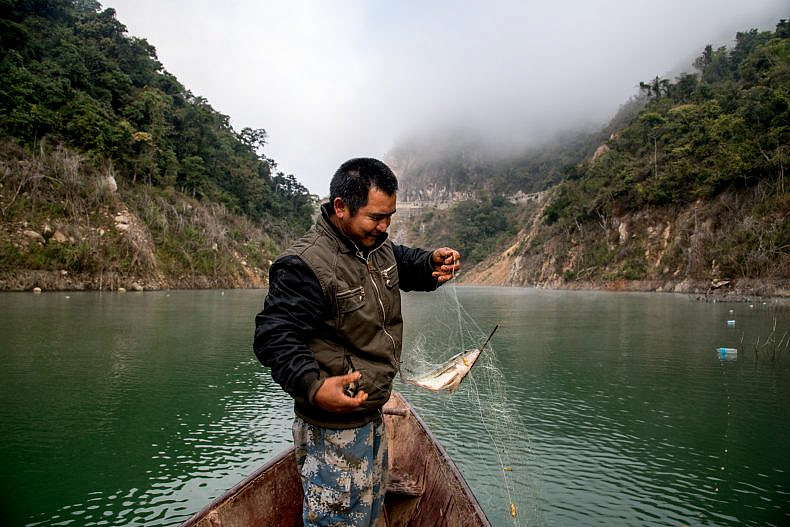
A fishermen checks his net on a tributary of the Lancang (Mekong) river in Jinglin. Photo by Luc Forsyth.
This would be the first and only time we encountered Lancang river fishing in China on any sort of scale, and we knew that if we returned in ten years it was unlikely that this pop-up industry would still be thriving. In China, we were continually learning, the Lancang was not a source of primary livelihood for individual families, but rather a force to be tamed for the development of the nation.
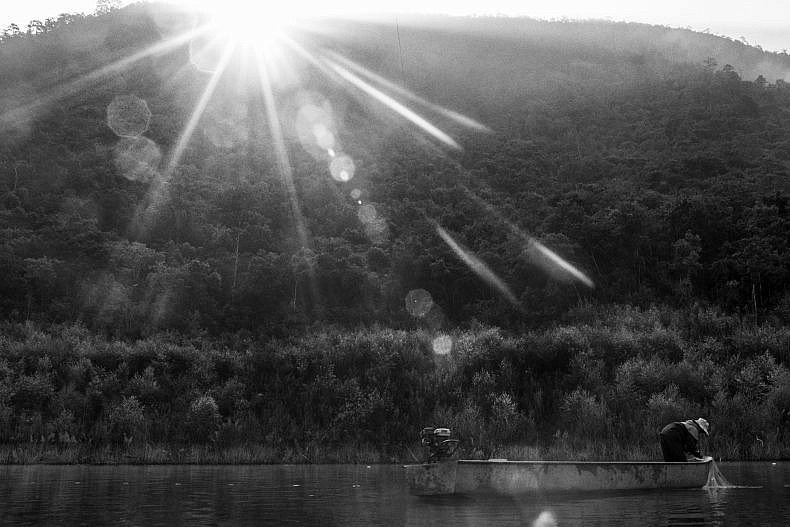
A view of one of the Lancang (Mekong) tributaries in Jinglin, Yunnan Province, China. Photo by Gareth Bright.
But from where we sat, watching the fishermen pull their nets from the piercing blue water, that knowledge didn’t make the landscape any less beautiful.
This piece originally appeared at A River’s Tail.













